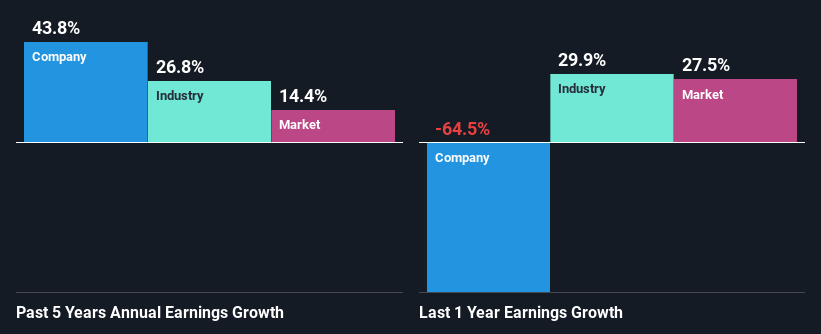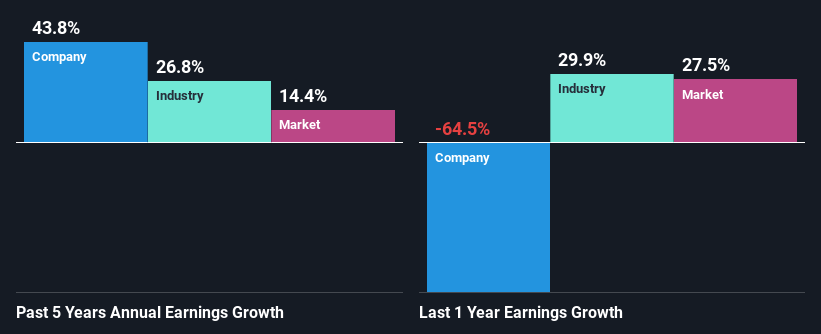It is hard to get excited after looking at Salesforce’s (NYSE:CRM) recent performance, when its stock has declined 22% over the past three months. However, the company’s fundamentals look pretty decent, and long-term financials are usually aligned with future market price movements. Specifically, we decided to study Salesforce’s ROE in this article.
Return on Equity or ROE is a test of how effectively a company is growing its value and managing investors’ money. Simply put, it is used to assess the profitability of a company in relation to its equity capital.
View our latest analysis for Salesforce
How Is ROE Calculated?
The formula for return on equity is:
Return on Equity = Net Profit (from continuing operations) ÷ Shareholders’ Equity
So, based on the above formula, the ROE for Salesforce is:
2.5% = US$1.4b ÷ US$58b (Based on the trailing twelve months to January 2022).
The ‘return’ is the profit over the last twelve months. So, this means that for every $1 of its shareholder’s investments, the company generates a profit of $0.02.
What Is The Relationship Between ROE And Earnings Growth?
Thus far, we have learned that ROE measures how efficiently a company is generating its profits. Depending on how much of these profits the company reinvests or “retains”, and how effectively it does so, we are then able to assess a company’s earnings growth potential. Generally speaking, other things being equal, firms with a high return on equity and profit retention, have a higher growth rate than firms that don’t share these attributes.
A Side By Side comparison of Salesforce’s Earnings Growth And 2.5% ROE
It is hard to argue that Salesforce’s ROE is much good in and of itself. Not just that, even compared to the industry average of 12%, the company’s ROE is entirely unremarkable. However, we we’re pleasantly surprised to see that Salesforce grew its net income at a significant rate of 44% in the last five years. We reckon that there could be other factors at play here. For example, it is possible that the company’s management has made some good strategic decisions, or that the company has a low payout ratio.
As a next step, we compared Salesforce’s net income growth with the industry, and pleasingly, we found that the growth seen by the company is higher than the average industry growth of 27%.
The basis for attaching value to a company is, to a great extent, tied to its earnings growth. What investors need to determine next is if the expected earnings growth, or the lack of it, is already built into the share price. This then helps them determine if the stock is placed for a bright or bleak future. Is CRM fairly valued? This infographic on the company’s intrinsic value has everything you need to know.
Is Salesforce Efficiently Re-investing Its Profits?
Salesforce doesn’t pay any dividend currently which essentially means that it has been reinvesting all of its profits into the business. This definitely contributes to the high earnings growth number that we discussed above.
Summary
On the whole, we do feel that Salesforce has some positive attributes. With a high rate of reinvestment, albeit at a low ROE, the company has managed to see a considerable growth in its earnings. Having said that, the company’s earnings growth is expected to slow down, as forecasted in the current analyst estimates. Are these analysts expectations based on the broad expectations for the industry, or on the company’s fundamentals? Click here to be taken to our analyst’s forecasts page for the company.
Have feedback on this article? Concerned about the content? Get in touch with us directly. Alternatively, email editorial-team (at) simplywallst.com.
This article by Simply Wall St is general in nature. We provide commentary based on historical data and analyst forecasts only using an unbiased methodology and our articles are not intended to be financial advice. It does not constitute a recommendation to buy or sell any stock, and does not take account of your objectives, or your financial situation. We aim to bring you long-term focused analysis driven by fundamental data. Note that our analysis may not factor in the latest price-sensitive company announcements or qualitative material. Simply Wall St has no position in any stocks mentioned.












Add Comment